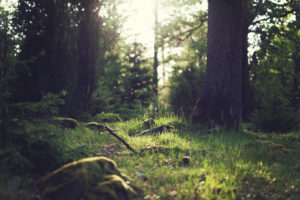
By Megan de Graaf, MScF
Through its Climate Change Resilient Forest Corridors Project, the Fundy Biosphere Reserve has identified climate change-resilient tree species and mapped out where those species are most likely to survive and thrive over the long term in southern New Brunswick.
We recently completed an analysis of which native tree species will likely prosper under changing climatic conditions over the next 100 years, as well as those that will merely persevere, and which could even decline. Northern tree species like spruces, fir, birches, and poplars will likely face more insects, disease, extreme weather, and competition, which would lead to slower growth and higher mortality. By contrast, southern species such as maples, oak, pines, beech, hemlock, and cherry should have a longer growing season and faster growth.
We have created a pamphlet that describes the eight “winners” for the changing climate. This pamphlet describes the trees and their preferred growing conditions, so that users have the right information about what to plant and where.
The other component of this research is related to forest corridors. As climate change and deforestation affect the forest, wildlife can become isolated. To begin connecting the FBR’s protected areas, we planted 2,500 climate change-resilient trees last summer. Eventually, these corridors will allow wildlife to pass through more easily and also ensure that the forests continue to thrive as the climate changes. We also hosted three free outdoor workshops in August 2014, where we presented our research and encouraged communities and local landowners to plant climate change-resilient tree species on their lands.
The pamphlet and maps are available here: http://www.fundy-biosphere.ca/en/home/forests-of-the-future.html
The project was funded by Environment Canada, the Gosling Foundation, and by the NB Environmental Trust Fund.
Back to all articles